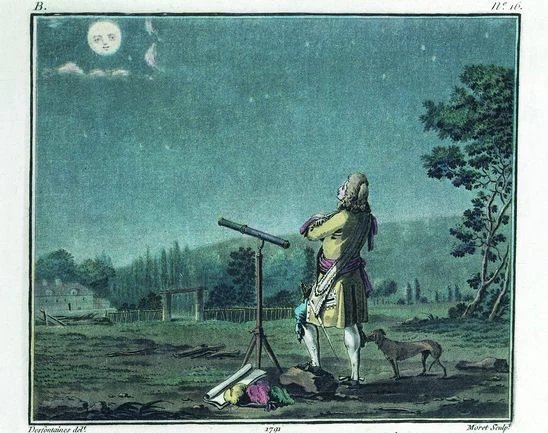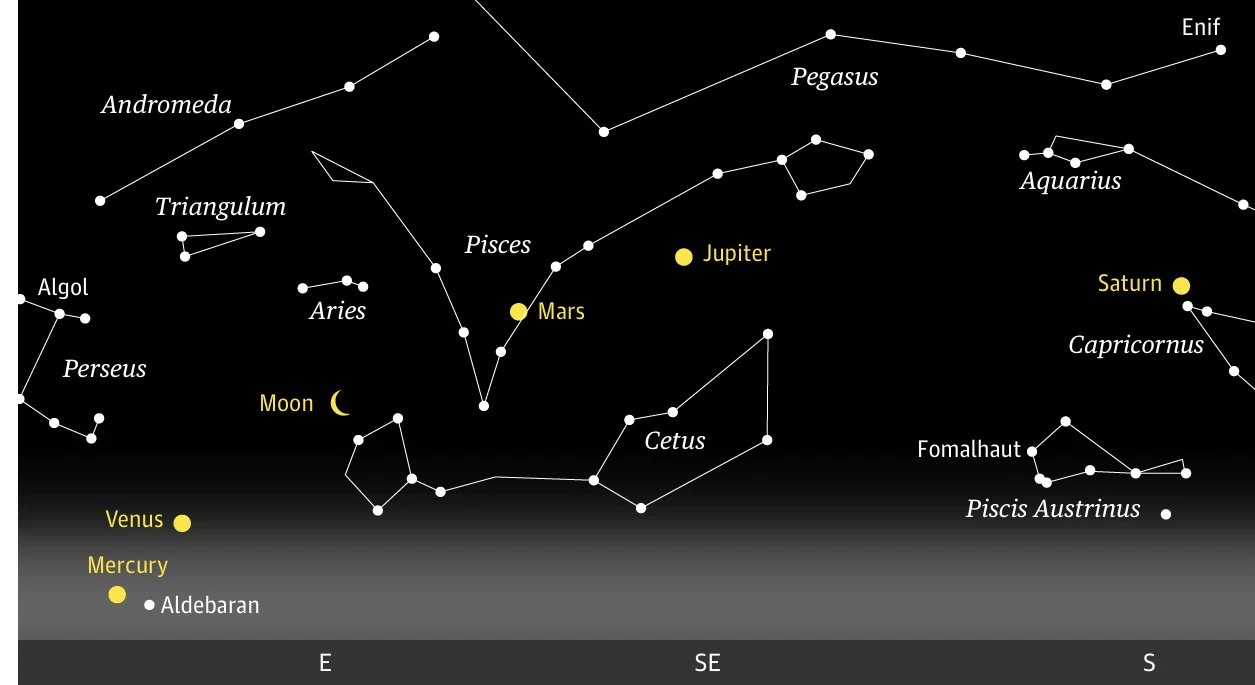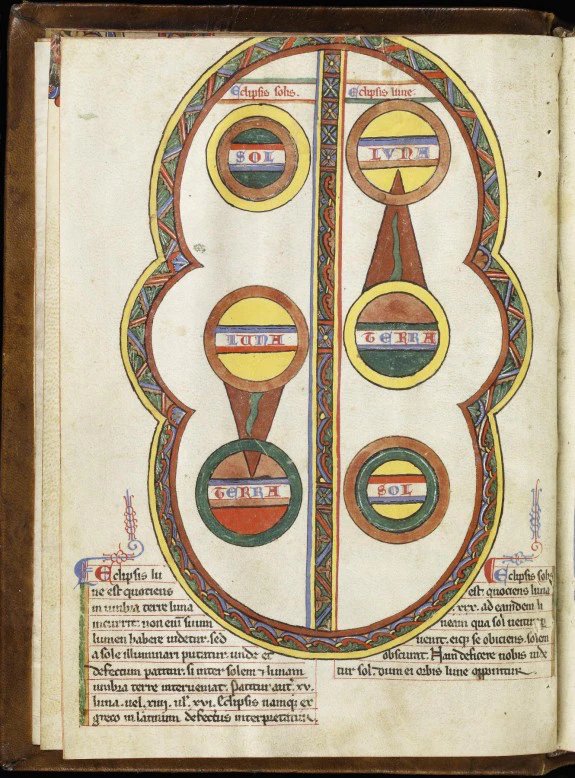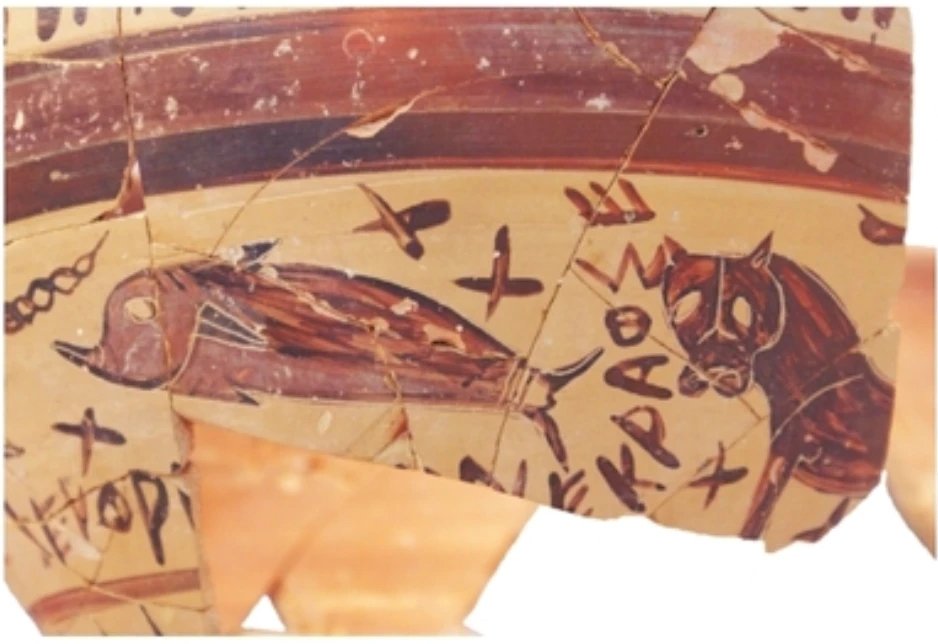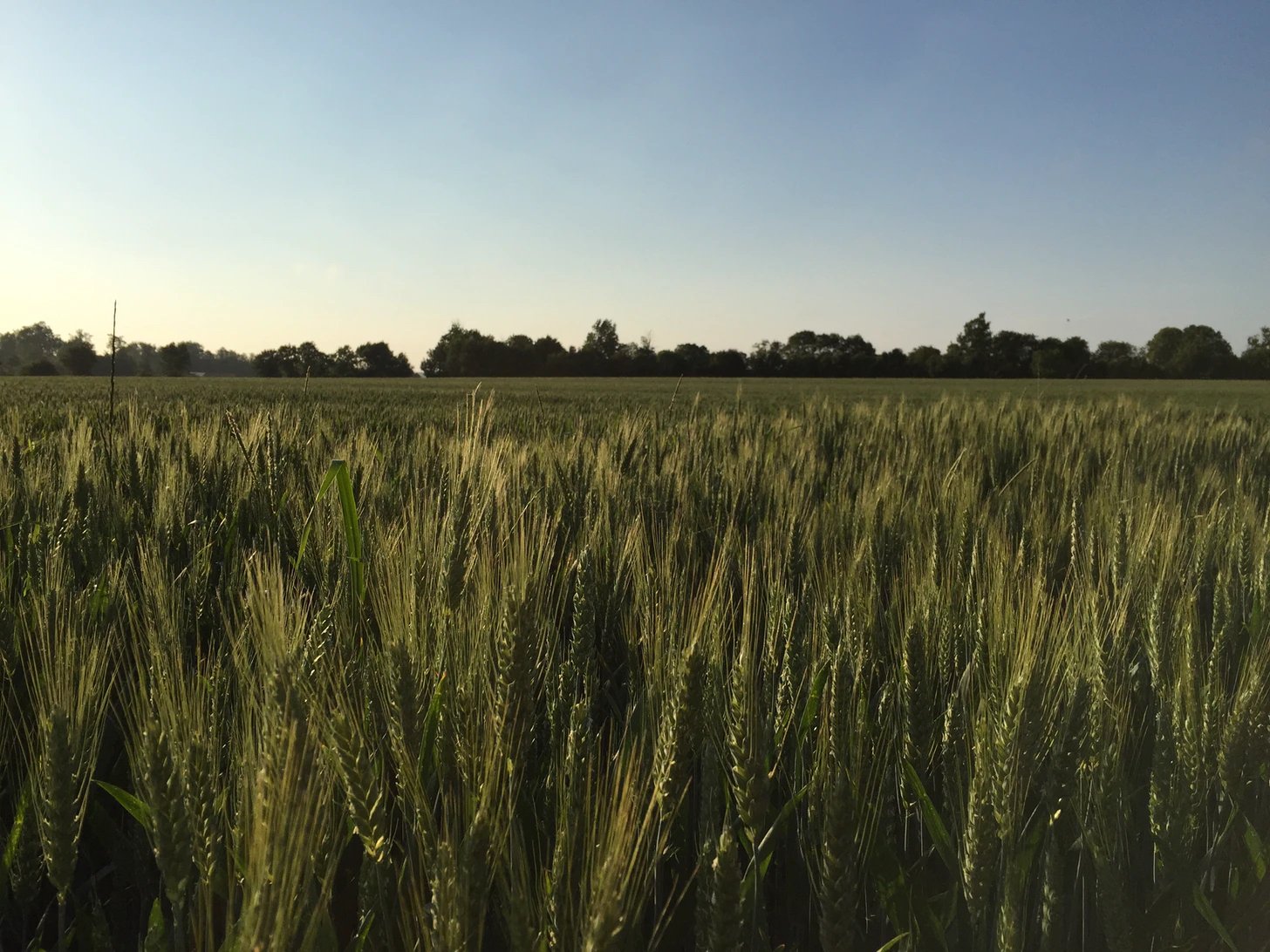Five planets gleam above the Chateau
Five planets hang in the pale sky...Man ponders his fate...and a rare event known as the "quintuple" alignment...In a brief moment just before dawn, we caught a glimpse...
Above: The 18th-century savant Bernard de Fontenelle, born in Normandy, contemplates the heavens.
Saturday, June 25, 2022
Chère amie, cher ami,
“Vous savez beaucoup de choses!” commented our farmer politely to Ranehault, our neighor.“You do know a lot!”
Ranehault, relentlessly scientifique, takes a dim view of medieval superstitions. The idea that the world as we know it would come to an end simply because five planets have lined up in the sky is absurd.
“Superstition! No effect on gravitational pull, tidal waves, or earthquakes, either,” she added sternly, as if she suspected us of having secret unscientific thoughts. “The planets are too far away.”
Nevertheless, Ranehault is inspired by the current, rare alignment of the five planets in the pre-dawn sky.
Yesterday, just before dawn on June 24, the quintuple celestial alignment was visible in its purest form.
Sky map for pre-dawn of June 24, 2022 shows grouping of four of the five visible planets. Saturn is beyond Jupiter and will also be visible (in a clear sky!) for a few more days.
Also, there was a “super” moon on June 14.
“Le Super moon,” she explained, shaking her head more in sorrow than outrage, is an anglicisme that has entered the French language, an abuse of le superlatif intended merely to excite the public.
In reality, the phenomène of June 14 was simply a full moon that occurred when the orb was at its closest to the Earth, its “perigee.” This happens twice a year.
The alignment, on the other hand, takes place about once every 20 years.
“And you might not have a chance to see it again,” she added, giving us a serious look.
“No man knoweth the hour nor the time,” agreed Monsieur amiably. “That’s probably what Anselmus was thinking.”
“Nox sine sideribus lunaque, dies sine solo,” wrote the obscure monk Anselmus in the year 1179.
“Night without stars nor moon, day without sun.”
He was describing two distinct eclipses, neither of which he had seen. They had been predicted by an astronomer, equally unknown today, called John of Toledo.
John had also predicted a quintuple celestial alignment of the planets, or exactly what is taking place now. These remarkable and disquieting events – the eclipse of the sun and the moon, the lining up of Mercury, Venus, Mars, Jupiter and Saturn were to happen all at once. No one knew what the resulting upheaval on Earth might be…but it was an accepted fact that the behavior of heavenly bodies had a direct causal impact on human life.
Precautions were put in place.
From Normandy down to Spain, east to Italy and Byzantium, from the Holy Roman Empire to Northern Africa, Christians and Muslims alike dug tunnels to hide from the probable fury of the heavens. Penances were performed in case the wrath turned out to be Judgement Day.
As it happened, John’s predictions were off by seven years. And no-one in the Western hemisphere could see the solar and lunar eclipses or the lining up of the five planets that finally occurred anyway. They took place on the other side of the Earth.
Diagram of a lunar and a solar eclipse, from a 13th-century psalter used at the Chartreuse de St-André-des-Ramières in the South of France.
Our farmer was impressed.
Who would imagine that back in the 12th century, so primitive compared to our lives today, a stargazer had the knowledge and the mathematical tools to predict eclipses and a celestial alignment! It was only 70 years ago, just before he was born, that the first tractors became widespread in the Normandy countryside. He himself had seen horses plowing and even the family cow pulling a hay rake.
Our son Henry cocked his head thoughtfully. The scope of man’s knowledge is not always in tandem with material progress, he reflected.
Six thousand years ago, the ancient Sumerians and Babylonians had already identified the constellations, planets and stars of the Northern Hemisphere. They had observed and recorded their regular movement across the night sky. And they had used these observations to predict the floods that sustained their desert agriculture. Their successors in the ancient world, the Egyptians, Persians, Indians, Greeks and Romans, had added to the body of astronomical knowledge. They had developed increasingly sophisticated mathematical and geometrical techniques to describe and predict celestial phenomena.
By the time John of Toledo mistakenly calculated a quintuple alignment, the Babylonians, centuries before, had already retroactively calculated the date of a five-planet line-up in 3101 B.C. This, they thought, was the year the god Bêl had created the human race.
“So you see,” said Henry, “astronomy and mathematics were well developed hundreds of years ago, when most human beings in France lived in mud and wattle huts.”
Ranehault looked slightly taken aback.
Divided into eight sections, this Sumerian star chart in the British Museum represents the night sky of January 3-4, 650 BC over Nineveh. The rectangular shape at the top has been identified as the Gemini constellation and the stars contained with an oval shape are the Pleiades. The two triangles in the lower right mark the bright stars of Pegasus.
“Astronomical knowledge was used for keeping track of long stretches of time, hundreds of years. It was a tool that helped create history, reflected Henry, the narrative of events arranged in chronological order. And once you have a written record of events, you can start to develop big ideas about causes and meaning in things that happen.”
And of course, it wasn’t just a thirst for knowledge that inspired Babylonian astronomers and their successors. The skies were like a giant screen upon which crop failures, war, plagues and other divine punishments, omens, and prophecies could be seen and read.
Ranehault, satisfied that she had turned our family into enthusiasts, has now recommended to our farmer that he try to observe the quintuple alignment.
Also, she wondered if he had noticed any change in our crops that might be attributable to the waxing and waning of la grosse lune, the big moon.
But if Monsieur Jean-Yves is interested in astronomy, he has never mentioned it. And if he sows and reaps by the phases of the moon, he keeps it to himself. On the other hand, he does read the weekly Bulletin de santé végétal from our local Chambre d’agriculture.
He was anxious to hop back into his pick-up. We’ve got about 35 acres of wheat planted this year, and the swelling ears have attained “le stade laiteux.” But vigilance! There’s an alert for septoriose du blé, a wheat fungus, that has been noted locally. It can knock out 40% of yield if it gets going.
Even without insects and fungi, the rendement of wheat will be low this year. This is the fault of “les conditions climatiques,” a dry spring with bursts of unseasonable heat. On the other hand, he remarked in a brighter tone, “les conditions politiques semblent favorables aux prix.”
Farming, with its pitiless exposure to weather and market prices, imparts a certain detachment concerning the misfortunes of others. In view of recent events affecting agriculture to the East, the Chambre is predicting high prices for wheat.
Perhaps the experience of farming, eternally vulnerable to the vicissitudes of nature, is one reason why from early times Man has looked to the heavens for assistance. But the great Hesiod, writing around 700 C, also used the movements of the heavenly bodies to predict the best times for war parties to set out to sea.
The most ancient depiction of the constellations yet found in Greece, on a c. 625 B.C. bowl from a recent excavation at Halae. It shows the summer constellations of Delphinus, the dolphin, and Leo.
“As your Shakespeare said, “La faute, cher Brutus, n’est nullement dans les étoiles, c’est en nous-mêmes…” said Ranehault with a sigh. “We can’t blame the celestial alignment. And material progress and scientific knowledge don’t necessarily lead to moral improvements.”
I set these thoughts aside. Shivering slightly in my robe de chambre, I rose before dawn to stand outside on the cold stone perron of the Chateau. The sky was a dark lavender; the trees were silhouettes of flat black.
Amid the clouds, the faint pinprick of Mercury and a vividly bright Venus hung on either side of the waning “super” moon.
Entranced, I contemplated these true astronomical wonders. After a few minutes, dawn’s chill light began to spread over the eastern horizon. The stars began to fade. And I went back inside to fall asleep between warm covers.
A bientôt au Chateau,
Elisabeth
As always, Heather and Beatrice (info@chateaudecourtomer.com and +33 (0) 6 49 12 87 98) will be happy to help you reserve your holiday or special gathering at the Farmhouse or the Chateau. We still have a few openings for this year and are taking bookings through 2024. Please feel free to call or write us.
Below: fields of wheat at Chateau de Courtomer

